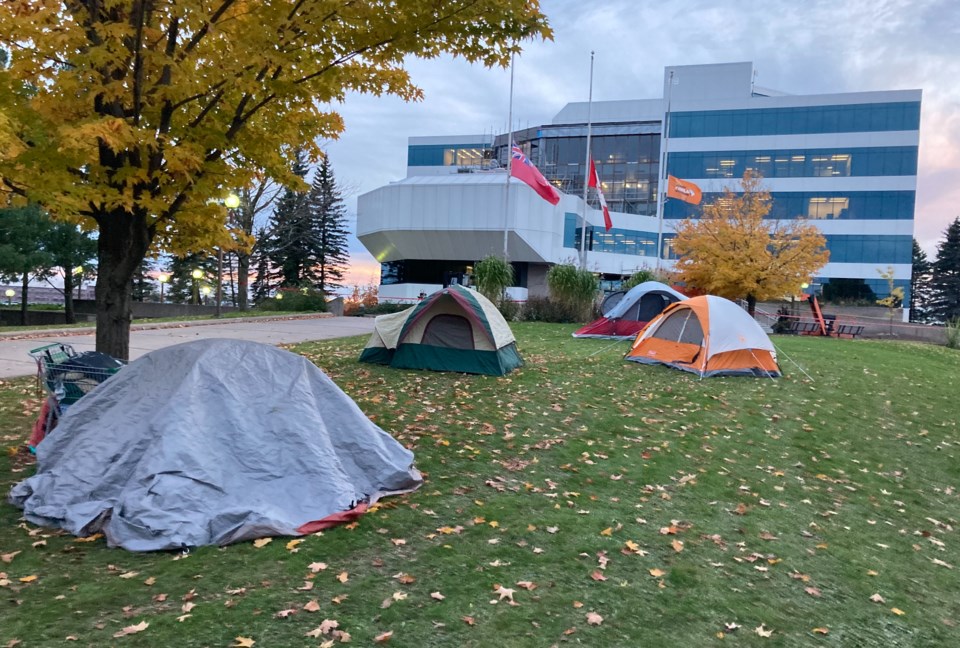An official homelessness count conducted late last month found a minimum of 244 homeless individuals in Sault Ste. Marie.
The survey, which followed guidelines from Employment and Social Development Canada, was the first done in the Sault since 2018.
That year, only 93 homeless were counted.
In 2016, the official count was 74.
But local officials are cautioning that comparisons to previous years are muddied because of a change of methodology expanding the traditional one-day count to include 'hidden' homeless.
"A point-in-time (PiT) count has been traditionally a one-day event capturing a snapshot of individuals experiencing homelessness," explains Jeff Barban, director of housing services at District of Sault Ste. Marie Social Services Administration Board (DSSMSSAB).
"These snapshots have previously excluded the hidden homeless population (someone who is moving from one sheltered place to another ie. couch-surfing) due to the fact they screened out when answering the first survey question 'Where are you staying tonight?' since they had a place to stay," Barban said.
This year, the DSSMSSAB expanded its data collection period to five days utilizing partnered agencies who regularly work alongside the homeless sector as well as including a capture of the number of individuals who are defined as hidden homeless, he said in a report prepared for a meeting of the DSSMSSAB on Thursday.
This year's PiT count took place on Oct. 26 between 12 p.m. and 8 p.m., with additional counts completed from Oct. 25 to Oct. 29.
"No magnet events [a strategy used during PiT counts to attract specific target groups to a planned time and location] were held in 2021 to avoid gatherings," Barban said.
"However, the time frame for the count was chosen to be held around the events of community partners and those on Ontario Works/ODSP who were flagged with having no fixed address for payment."
Assisting DSSMSSAB with the count were the John Howard Society, Ontario
Aboriginal Housing Services, Canadian Mental Health Association (Algoma) and the Indigenous Friendship Centre.
"It is also important to recognize that previous PiT counts included the supports from many other agencies, however, this year’s event was scaled down due to COVID-19. The agencies involved this year were those who are directly involved with the homelessness prevention team, who also acted as the PiT planning committee," Barban reported.
Notwithstanding the methodological changes invalidating year-to-year comparisons, Barban found two significant trends in the data:
- an increase in the number of homeless individuals identifying as Indigenous
- an increase of people experiencing chronic homelessness
Sixty-five per cent of the Sault's homeless identified as Indigenous in the 2021 count, compared to 37.5 in 2018 and 42.3 in 2016.
This year, 52 per cent described themselves as being chronically homeless (six months or more during the past year), compared to 37.5 in 2018 and 42.3 two years earlier.
For purposes of the survey, the following federal definition of homelessness was used: "The situation of an individual or family who does not have a permanent address or residence; the living situation of an individual or family who does not have stable, permanent,
appropriate housing, or the immediate prospect, means and ability of acquiring it."
Other findings from the Sault's 2021 homelessness count:
- twenty-seven individuals confirmed to canvassers that they were homeless with no place to go, compared to two in 2018 and none in 2016
- another seven individuals were observed to be unsheltered this year but did not respond to questions about their housing status
- fifty-five persons indicated they were housed through correctional or health services
- forty-two reported being housed in emergency shelters or violence against women services
- ninety-four people said they were staying with someone else
- twenty were in transitional housing, or a hotel/motel funded by the municipality or a homeless program
- four were living in vehicles
